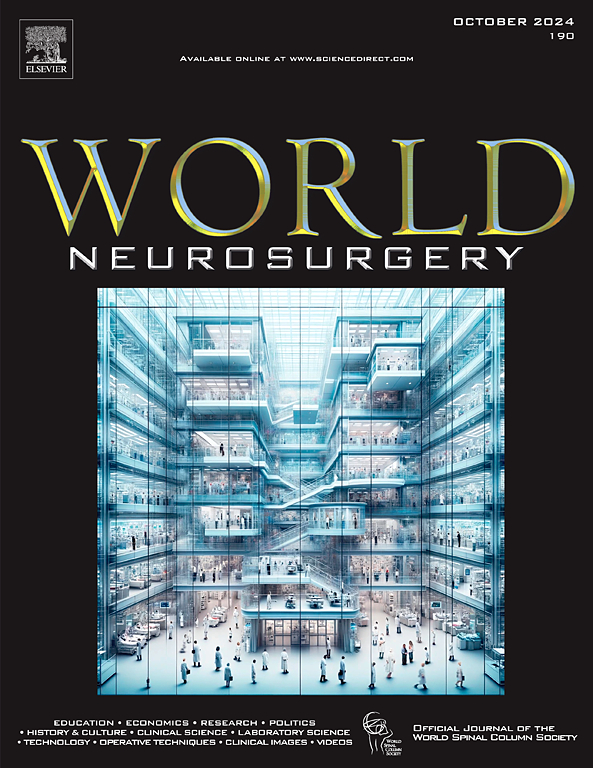Integrating Single-Cell Sequencing and Transcriptome Analysis to Investigate the Role of Ferroptosis in Ischemic Stroke and the Molecular Mechanisms of Immune Checkpoints
IF 1.9
4区 医学
Q3 CLINICAL NEUROLOGY
引用次数: 0
Abstract
Background
Early diagnosis of ischemic stroke (IS) remains challenging. Given the crucial role of ferroptosis in IS, this study aims to identify key genes associated with ferroptosis in IS, providing insights into its molecular mechanisms and potential biomarkers for early detection.
Methods
The single-cell transcriptome dataset GSE247474 from the Gene Expression Omnibus. Ferroptosis scores in astrocytes were calculated using the WP_FERROPTOSIS gene set, and differential analysis was conducted to compare ferroptosis activity between the disease and control groups. Key ferroptosis-related genes were identified using Lasso regression and support vector machine algorithms, and their diagnostic potential was assessed through receiver operating characteristic curve analysis. Additionally, we performed immune infiltration analysis and transcription factor network prediction. Pseudotime analysis was used to explore the differentiation trajectories of astrocytes and T-cell subsets.
Results
Astrocytes in the disease group showed significantly higher ferroptosis scores than those in the control group. Using machine learning algorithms, we identified 3 key ferroptosis-related genes—SLC3A2 (solute carrier family 3 member 2), FDFT1 (farnesyl-diphosphate farnesyltransferase 1), and BACH1 (BTB and CNC homology 1)—and validated their diagnostic value (area under the curve >0.9). Immune infiltration analysis revealed that SLC3A2 and BACH1 expression levels were positively correlated with CD4+ follicular T cells and negatively correlated with CD4+ memory T cells. FDFT1 showed positive correlations with both mast cells and CD4+ memory T cells. Pseudotime analysis demonstrated dynamic changes in key gene expression along the differentiation trajectories of astrocytes and T cells.
Conclusions
SLC3A2, FDFT1, and BACH1 are potential molecular markers for IS diagnosis.
结合单细胞测序和转录组分析研究铁凋亡在缺血性卒中中的作用和免疫检查点的分子机制。
背景:缺血性脑卒中的早期诊断仍然具有挑战性。鉴于铁突变在缺血性脑卒中中的关键作用,本研究旨在确定缺血性脑卒中中与铁突变相关的关键基因,从而深入了解其分子机制和早期检测的潜在生物标记物:使用 WP_FERROPTOSIS 基因组计算星形胶质细胞中的铁突变评分,并进行差异分析以比较疾病组和对照组的铁突变活性。利用 Lasso 回归和支持向量机算法确定了与铁突变相关的关键基因,并通过 ROC 曲线分析评估了这些基因的诊断潜力。此外,我们还进行了免疫浸润分析和转录因子网络预测。伪时间分析用于探索星形胶质细胞和T细胞亚群的分化轨迹:结果:疾病组星形胶质细胞的铁突变评分明显高于对照组。利用机器学习算法,我们确定了三个关键的铁变态相关基因--SLC3A2(溶质运载家族 3 成员 2)、FDFT1(角鲨烯合成酶)和 BACH1(BTB 和 CNC 同源物 1),并验证了它们的诊断价值(AUC > 0.9)。免疫浸润分析显示,SLC3A2和BACH1的表达水平与CD4+滤泡T细胞呈正相关,而与CD4+记忆T细胞呈负相关。FDFT1 与肥大细胞和 CD4+ 记忆 T 细胞均呈正相关。伪时间分析表明,沿着星形胶质细胞和 T 细胞的分化轨迹,关键基因的表达发生了动态变化:结论:SLC3A2、FDFT1 和 BACH1 是诊断 IS 的潜在分子标记物。
本文章由计算机程序翻译,如有差异,请以英文原文为准。
求助全文
约1分钟内获得全文
求助全文
来源期刊

World neurosurgery
CLINICAL NEUROLOGY-SURGERY
CiteScore
3.90
自引率
15.00%
发文量
1765
审稿时长
47 days
期刊介绍:
World Neurosurgery has an open access mirror journal World Neurosurgery: X, sharing the same aims and scope, editorial team, submission system and rigorous peer review.
The journal''s mission is to:
-To provide a first-class international forum and a 2-way conduit for dialogue that is relevant to neurosurgeons and providers who care for neurosurgery patients. The categories of the exchanged information include clinical and basic science, as well as global information that provide social, political, educational, economic, cultural or societal insights and knowledge that are of significance and relevance to worldwide neurosurgery patient care.
-To act as a primary intellectual catalyst for the stimulation of creativity, the creation of new knowledge, and the enhancement of quality neurosurgical care worldwide.
-To provide a forum for communication that enriches the lives of all neurosurgeons and their colleagues; and, in so doing, enriches the lives of their patients.
Topics to be addressed in World Neurosurgery include: EDUCATION, ECONOMICS, RESEARCH, POLITICS, HISTORY, CULTURE, CLINICAL SCIENCE, LABORATORY SCIENCE, TECHNOLOGY, OPERATIVE TECHNIQUES, CLINICAL IMAGES, VIDEOS
 求助内容:
求助内容: 应助结果提醒方式:
应助结果提醒方式:


